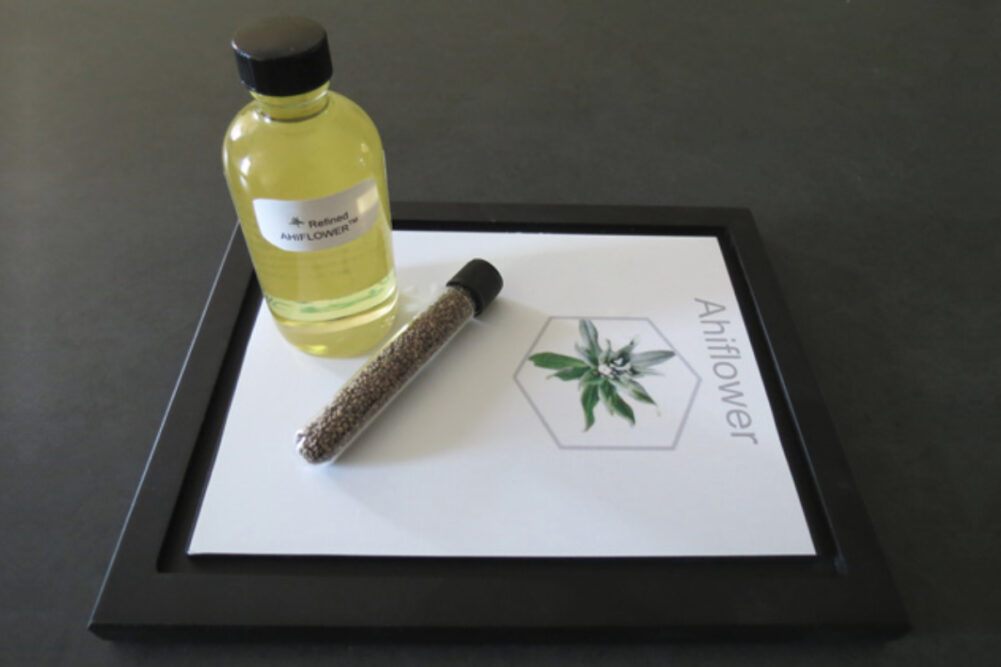NORTH YORKSHIRE, UNITED KINGDOM — Ahiflower oil adds omega-3 fatty acids to the human diet and assists farmers in practicing regenerative agriculture, according to Nature’s Crops International. Another benefit is helping to restore the world’s supply of fish, several of which are sourced for omega-3 fatty acids.
Natures Crop’s International, which has offices in North Yorkshire and Kensington, Prince Edward Island, manufactures specialty oils for food, dietary supplements and personal care products. The company held a virtual event featuring ahiflower on Sept. 23.
Ahiflower is 18% to 20% alpha-linolenic acid (ALA), an omega-3 fatty acid. The oil, which comes from the plant’s seeds, also has a good balance of omega-3, omega-6 and omega-6 fatty acids, according to the company. Several supplement products contain ahiflower oil.
“It’s already appearing in some food products, ranging from truffles to smoothies and protein shakes and snack bars,” said Andrew Hebard, company founder, president and chief executive officer, who added a dry powder is available, too.
NCI contracts with farmers to grow ahiflower (Buglossoides arvensis) on thousands of acres in the United Kingdom.
“We’re early days, but our moonshot and our most aspirational goal is to be growing millions of acres in the future,” Mr. Hebard said.
Environmentally, ahiflower minimizes soil disturbance, maximizes crop diversity and uses a minimal amount of synthetic inputs, according to NCI.
“I was looking for another crop to add to the rotation, bringing in another different type of crop for the benefits of soil health, and a crop that was going to be a bit of a niche, and something that was going to have a long-term sustainable future,” said Ian Hurts, a farmer in the United Kingdom.
He said he was interested in regenerative agriculture in that he wanted to improve soil health and reduce artificial inputs.
“What we found is ahiflower needs a lot less fertilizer than some other crops,” Mr. Hurts said. “Its usage of insecticides — we haven’t used any with the ahiflower. We’ve used very little fungicide. So our inputs are really low.”
The human body takes the ALA from the ahiflower oil and converts it into two other omega-3 fatty acids: docosahexaenoic acid (DHA) and eicosapentaenoic acid (EPA). Oil containing these two omega-3 fatty acids may be sourced from several types of fish. One of those fish, the menhaden, acts as a forage fish, which means larger fish like the striped bass and gray trout need menhaden as a food source, said David Sneed, executive director of the Coastal Conservation Association of North Carolina. Menhaden also play a role in water’s ecosystem as they eat algae and plankton to keep the water clean, he said.
“Removing menhaden is like taking the liver out of your body,” Mr. Sneed said.
He said ahiflower oil could be an “amazing replacement” for omega-3 fatty acids from menhaden and help boost menhaden supply.
Increasing demand for seafood globally has put pressure on fish stocks, with an estimated 88% of fish stocks either fully exploited or overexploited, according to Friend of the Sea, which promotes sustainable fisheries, aquaculture and shipping. About 25 million tonnes of wild fish are harvested for oil and fertilizer each year, according to NCI.
“In our own little way, we’re trying to add balance to the ocean,” Mr. Hebard said.





